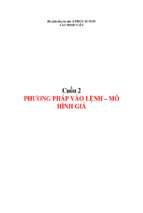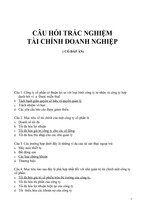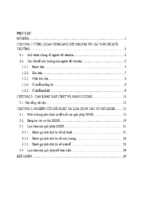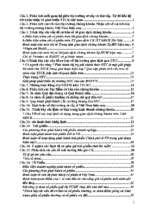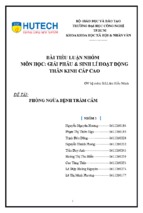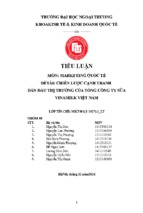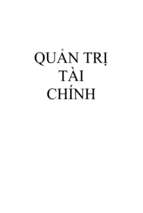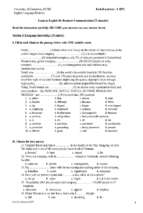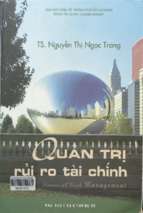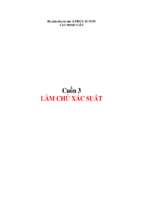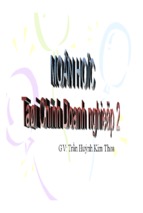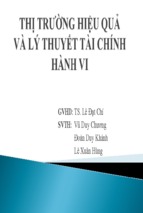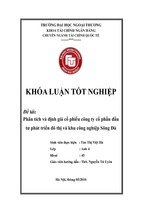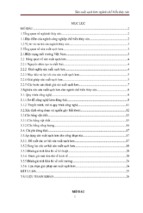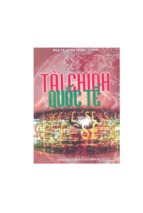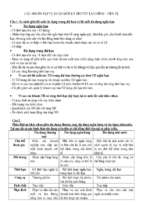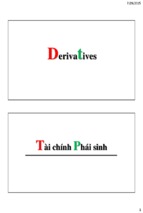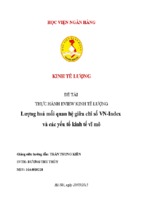Qualification
Unit Code / Unit number and title
R/601/0836
Pearson BTEC Level 5 HND Diploma in
Business (Management)
Unit 9 Management Accounting: Costing and
Budgeting
Student name / BTEC Registration Number
Assessor name
Vũ Hoàng Anh
F06-011
Nguyễn Tuấn Anh
F07-002
Lê Phương Mai
F08-047
Nguyễn Thanh Ngọc
F08-055
Trần Thế Võ
F07-068
Date issued
Hand in deadline Submitted on
Ms. Nguyễn Bích Ngọc
29th December 2015
Assignment title
Super Star Publishing House
Assignment No
2 of 2
In this assessment you will have opportunities to provide evidence against the following criteria.
Indicate the page numbers where the evidence can be found.
h
Learnin
g
Outcom
e
LO3
Learning
outcome
Be able to
prepare
forecasts
and
budgets for
a business
Assessme
nt Criteria
In this assessment you
will have the
opportunity to present
evidence
that shows
Explain
the purpose
and you
3.1
nature of the budgeting
process
3.2
Select appropriate budgeting
methods for the organisation
and its needs
3.3
Prepare budgets according to
the chosen budgeting method
3.4
Prepare a cash budget
MACB A2 Sept 2015
1
Tas
k
no.
Evidence
(Page no)
LO4
Be able to
monitor
performanc
e against
budgets
within a
business
4.1
4.2
4.3
Calculate variances, identify
possible causes and
recommend corrective action
Prepare an operating
statement reconciling
budgeted and actual results
Report findings to
management in accordance
with identified responsibility
centres
Student declaration
I certify that the work submitted for this assignment is my own. I have clearly referenced any sources
used in the work. I understand that false declaration is a form of malpractice.
Date: 29th December 2015
Student signature:
In addition to the above PASS criteria, this assignment gives you the opportunity
to submit evidence in order to achieve the following MERIT and DISTINCTION
grades
Grade Descriptor
Indicative
characteristic/s
Contextualisation
M1 Identify and
apply strategies to
find appropriate
solutions
An effective approach to
study and research has been
applied.
To achieve M1, Effective judgements have
been made on the purpose and nature of the
budgeting process in budget preparation
(Task 1)
M2 Select / design
and apply
appropriate
methods /
techniques
Relevant theories and
techniques have been
applied.
To achieve M2, Appropriate techniques (e.g.
incremental, zero-based, fixed and flexible
etc) have been applied for preparation of
budgets
(Task 1)
MACB A2 Sept 2015
2
M3 Present and
communicate
appropriate
findings
A range of methods of
presentation have been used
and technical language has
been accurately used.
To achieve M3, An appropriate structure and
approach has been used and a range of
methods of presentation has been used to
prepare budgets (Task 1)
D1 Use critical
reflection to
evaluate own work
and justify valid
conclusions
Conclusions have been
arrived at through synthesis
of ideas and have been
justified.
To achieve D1, the ability to show evaluation
has taken place to generate and recommend
corrective action to monitor performance
against budgets
D2 Take
responsibility for
managing and
organising
activities
Activities have been
managed.
(Task 2)
To achieve D2, Independence demonstrated
and substantial activities have been planned,
managed
and
organised
related
to
responsibility centres and also identification
of responsibility for variances.
(Task 2)
D3 Demonstrate
convergent / lateral
/ creative thinking
Innovation and creative
thought have been applied
Convergent, lateral and creative thinking has
been used to solve problem reconciling
budgeted and actual results (Task 2)
Assignment Brief
Qualification
Pearson BTEC Level 5 HND Diploma in Business
(Management)
Unit number and title
Unit 9: Management Accounting: Costing and Budgeting
Assessor name
Date issued
Hand in deadline
MACB A2 Sept 2015
3
Assignment title
Super Star Publishing House
Assignment no
2 of 2
Evidence checklist
Summary of evidence
required by student
Task 1
A group assignment
Task 2
A group assignment
Task 3
A group assignment
MACB A2 Sept 2015
4
Evidence presented
PRESENTATION
1. The assignment should have a cover page that includes the assignment
title, assignment number, course title, module title, Lecturer/tutor name
and student’s name. Attach all the pages of assignment brief/achievement
summary with your report and leave them blank for official use.
2. Ensure that authenticity declaration has been signed.
3. This is an individual assignment.
4. Content sheet with a list of all headings and page numbers.
5. A fully typed up professionally presented report document. Use 12 point
Arial or Times New Roman script.
6. Your assignment should be word-processed and should not exceed 2,500
words in length.
7. Use the Harvard referencing system.
8. Exhibits/appendices are outside this limit.
9. The assignment should contain a list of any references used in the report.
NOTES TO STUDENTS FOR SUMMISSION
Check carefully the submission date and the instructions given with the
assignment. Late assignments will not be accepted.
Ensure that you give yourself enough time to complete the assignment by
the due date.
Do not leave things such as printing to the last minute – excuses of this
nature will not be accepted for failure to hand-in the work on time.
You must take responsibility for managing your own time effectively.
If you are unable to hand in your assignment on time and have valid
reasons such as illness, you may apply (in writing) for an extension.
Failure to achieve a PASS grade will results in a REFERRAL grade being
given.
Take great care that if you use other people’s work or ideas in your
assignment, you properly reference them in your text and any
bibliography.
NOTE: If you are caught plagiarizing, the University policies and
procedures will apply.
MACB A2 Sept 2015
5
Achievement Summary
Qualification
Pearson BTEC Level 5 HND
Diploma in Business
(Management)
Assessor
name
Unit Number
and title
Unit 9 Management Accounting:
Costing and budgeting
Student name
Criteria
Reference
To achieve the criteria the evidence must show that
the student is able to:
Achieved
?
(tick)
LO 3
3.1
Explain the purpose and nature of the budgeting process
3.2
Select appropriate budgeting methods for the organisation and its
needs
Prepare budgets according to the chosen budgeting method
3.3
Prepare a cash budget
3.4
LO 2
4.1; 4.2
4.3
Calculate variances, identify possible causes and recommend
corrective action. Prepare an operating statement reconciling
budgeted and actual results
Report findings to management in accordance with
identified responsibility centres
Higher Grade achievements (where applicable)
Grade descriptor
Achieved
?
(tick)
Grade descriptor
M1: Identify and apply strategies
to find appropriate solutions
D1: Use critical
reflection to evaluate
own work and justify
valid conclusions
M2: Select/design and apply
appropriate methods/techniques
D2: Take responsibility
for managing and
organising activities
D3 Demonstrate
convergent / lateral /
creative thinking
M3: Present and communicate
appropriate findings
MACB A2 Sept 2015
6
Achieved
?
(tick)
Assignment Feedback
Formative Feedback: Assessor to Student
Action Plan
Summative feedback
Feedback: Student to Assessor
Assessor Signature
Date
Student Signature
Date
FOR INTERNAL USE ONLY
VERIFIED
DATE
YES
NO
: .................................................................
VERIFIED BY : .................................................................
NAME
: .................................................................
MACB A2 Sept 2015
7
MACB A2 Sept 2015
8
EXECUTIVE SUMMARY
Management accounting is absolutely essential to any organisation because this process helps
the managers be aware of the state of the company and possible solutions for occurring
problems or improvements to current operations. In this report, the following aspects of
management accounting are achieved:
•
Explaining the purpose and nature of the budgeting process
•
Selecting appropriate budgeting methods for the organisation and its needs
•
Preparing budgets according to the chosen budgeting method
•
Preparing a cash budget
•
Calculating an operating statement reconciling budgeted and actual results
•
Reporting the findings to management in accordance with identified responsibility
centres
By accomplishing these tasks, the organisation can ensure their continued sustainability and
profitability.
MACB A2 Sept 2015
9
TABLE OF CONTENT
LIST OF TABLES AND FIGURES...........................................................11
I.
INTRODUCTION.........................................................................12
II.
BODY...................................................................................13
3.1
The purpose and nature of the budgeting process...................................13
3.1.1
Definition........................................................................13
3.1.2
Roles of budgeting in firm’ planning and controlling..........................15
3.2
Select appropriate budgeting methods for the organisation and its needs..........18
3.2.1
Fixed budget and flexble budget................................................18
3.2.2
Incremental budgeting and zero-based budgeting..............................20
3.2.3
Top-down and bottom-up budgeting............................................22
3.3
Prepare budgets according to the chosen budgeting method........................25
Revenue Budget......................................................................25
Production Budget in Unit............................................................25
Direct Material Usage Budget........................................................25
Direct Material Purchases Budget....................................................26
Direct Manufacturing Labor Cost Budget...........................................26
Manufacturing Overhead Budget....................................................26
Budgeted Unit Cost of Ending Finished Goods Inventory..........................27
Ending Inventories Production Budget..............................................27
Ending Inventories Material Budget.................................................27
Cost of Goods Sold Budget..........................................................28
Nonmanufacturing Cost Budget......................................................28
Budgeted Income Statement..........................................................28
3.4. Prepare a cash budget...................................................................29
MACB A2 Sept 2015
10
4.1
(&4.2) Variances, Operating Statement and Analysis...............................30
1.
Variances..............................................................................30
2.
Operating Statement..................................................................32
3.
Analysis...............................................................................33
4.
Conclusion............................................................................34
4.3
Report findings to management in accordance with identified responsibility centres
35
III.
CONCLUSION.........................................................................37
IV.
REFERENCES..........................................................................38
MACB A2 Sept 2015
11
LIST OF TABLES AND FIGURES
Table 1: Revenue Budget.........................................................................................................25
Table 2: Production Budget in Unit..........................................................................................25
Table 3: Direct Material Usage Budget....................................................................................25
Table 4: Direct Material Purchases Budget..............................................................................26
Table 5: Direct Manufacturing Labor Cost Budget..................................................................26
Table 6: Manufacturing Overhead Budget...............................................................................27
Table 7: Manufacturing overhead budget.................................................................................27
Table 8: Budgeted Unit Cost of Ending Finished Goods Inventory........................................27
Table 9: Ending Inventories Production Budget......................................................................27
Table 10: Ending Inventories Material Budget........................................................................27
Table 11: Cost of Goods Sold Budget......................................................................................28
Table 12: Nonmanufacturing Cost Budget...............................................................................28
Table 13: Budgeted Income Statement.....................................................................................28
Table 14: Cash Budget.............................................................................................................29
Table 15: Operating Statement.................................................................................................32
Table 16: Analysis of the diffident Variances...........................................................................34
Figure 1: Master budget diagram.............................................................................................14
Figure 2: Budget planning process diagram.............................................................................16
MACB A2 Sept 2015
12
I.
INTRODUCTION
In this assignment, we discuss the financial information of Super Star
Company. We need to prepare their budgets and suggest some
methods for Super Star Co. to ensure their liquidity. We will also
analyse the variances of Super Star Co. and explain those variances
and decide which managers should be rewarded or punished.
MACB A2 Sept 2015
13
II.
BODY
.1 The purpose and nature of the budgeting process
.1.1
Definition
A budget is defined as management’s quantitative expression of plans for
forthcoming
period (American
Management
Association
Communications
(AMACOM), 2013. Budgets are prepared at various levels of an organization. The
budget process is the way an organization goes about building its budget. A good
budgeting process engages those who are responsible for adhering to the budget and
implementing the organization's objectives in creating the budget [ CITATION
Eli10 \l 1033 ].
AMACOM (2013) defines the master budget as the overall financial plan for the period,
which reflects the organization’s goals and objectives. The master budget includes
operating and financial budgets. Operating budgets show the company’s planned sales
and operating expenses. Financial budgets reflect financing plans such as borrowings,
leasing, and cash management.
Desired Ending Inventory
Budget
Budget
method
Sales Budget
Production budget
Budgets help the company set out the cost or revenue that can be incurred or earned
for the future periods. Nowadays, budgeting methods being used popularly consist of
fixed budget andDirect
flexible
budget, incremental
budgeting
and overhead
zero-based budgeting,
material
Direct labour
Factory
top-down and bottom-up budgeting. They have many advantages but drawbacks are not
few. Based on characteristic of these methods, the company will choose the most suitable
method to use.
Cost of Goods Sold Budget
Master Budget
Selling Expense Budget
Administrative Expense Budget
Budget Income Statement
MACB A2 Sept 2015
14
Capital Budget
Budgeted Balance Sheet
Cash Budget
Figure 1: Master budget diagram
Source: [ CITATION Lie08 \l 1033 ]
MACB A2 Sept 2015
15
.1.2
Roles of budge[ting in firm’ planning and controlling
Budgeting play an important role in the planning and controlling of an organization
(Business Solution, 2013)
a. Planning
Making all the business planning including the utilization of resources, capital,
and assets, maximizing the profit and minimizing the liabilities are only done by the
proper budget planning. Making of right budget on right time will shows the
performance of good selective teams, and the business management. Generally, it can
be said that budgeting is about aiding a company to make plans for the future.
b. Controlling
Controlling is also an integral part of the business management. Controlling is the
only way to implement the business plan efficiently. In other words, controlling is the
way to handle the finance and leisure expenses. So, this way, the company’s activities,
employees, time and money can all be under control with the introduction of
budget in the company’s financial plan. The company would certainly become
more efficient if it works in a controlled manner. So, this would be for the
mutual benefit of both the employees and the company as well. Additionally, the
connection between planning and control is the budget. To have more detail about the
connection, the planning and control cycle is shown below.
c. Ensure the achievement of the organization’s objectives
Budgets are representative for the future objectives of the company; it shows targets
which need to be achieved in estimated fixed timescale. By this way, the company has
general views and can estimate operation should use to obtain objectives promptly.
d. Co-ordinate activities
When creating budgets, Super Star Publishing House set goals which relate to relative
parties, precisely, departments. This leads to operations of departments more
coordinated in order to achieve common aim.
MACB A2 Sept 2015
16
e. Provide a frame work for responsibility accounting
As a position of department’s head, department managers has responsible for the
achievements set in budget. Based on budget, managers of department will have
appropriate manners to implement and accomplish goals set.
f. Motivate employees to improve their performance
In order to obtain benefits above, the company needs to use budget process including
planning and control aspect of budgeting
Figure 2: Budget planning process diagram
Source: Financial management (BPP, 2010)
Planning process is chain stages including objectives needing development and
preparing suitable budgets to obtain goals. This process includes 5 steps.
Step 1: Identify objectives
Super Star Publishing establishes the direction for departments such as sales,
production, fixed charges, etc. For example, regarding finished goods inventory on
hand at the end of each month, the company wants to keep from losing sales. Based
MACB A2 Sept 2015
17
on the decision of Manager – Super Star, vice president of marketing, the manager
wants to increase sales and attract customers.
Step 2: Identify potential strategies
In this step, Super Star Publishing identifies a range course of strategies or operations
which are possibly appropriate the potential of company. To do that, the company
must collect all essential information to ensure that they have full and deep
understanding about the sources of the firm, including external and internal
information which are known as “position audit” or “strategic analysis” and include
looking both inwards and outwards.
•
Regarding internal information, Super Star musts find out what kind and how
many resources that they have, actual capacity of departments within the company,
working-capital, equity and liabilities, etc.
•
Super Star also must gather external information to under the position and
image of company in the market, evaluating their strengths and weaknesses.
Furthermore, they must assess these towards rivals and whole market to identify
possibly business opportunities. This process is called SWOT analysis.
Step 3: Evaluate strategies
The strategies must subsequently be assessed in terms of suitability, feasibility and
acceptability in the context of the strategic analysis. Super Star will select strategies
which are most potential for obtaining company’s goals. In this step, one or several
strategies may be selected.
Step 4: Choose alternative courses of action
Super Star Publishing collect selected strategies together and co-ordinate them into a
long-run plan which is normally expressed in financial terms, these are:
•
Projected cash flow
•
Projected long-term profits
MACB A2 Sept 2015
18
•
Capital expenditure plans
•
Balance sheet forecasts
•
A description of the long-term objectives and strategies in words
Step 5: Implement the long-term plan
Long-term plan at this step is separately into smaller parts, usually one year, being
suitable with each developed period of company. The result of short-term plan is the
budget.
Control process involves managing operations implemented really basing on planning
objectives. This process includes last 2 steps: Measure actual results and compare
with the plan, respond to divergences from the plan. After ending a budget, the
company compares actual results to expected results in budget. Managers also
consider the feasibility of achieving the objectives if it was unforeseen. This aspect of
control is carried out by senior manager. The control of day-to-day operations is
carried out by lower manager.
3.2 Select appropriate budgeting methods for the organisation and its needs
3.2.1
Fixed budget and flexble budget
Fixed budget: “A fixed budget, also known as a static budget, projects static
levels of known income and expenses over a set period of time” [ CITATION
Ste12 \l 1033 ]. This method has some advantages and disadvantages as
follow[CITATION Dav15 \l 1033 ]
Advantages
o Measure profits : Fixed budget helps the company measure short-term and
long-term budgets. It allocates money to essential departments. Profits will be
the money being left at the end of the period.
o Kepping costs down: This method will keep costs down if the company
is strict in spending money for future periods. It has to make decision to use
this amount effectively. As a result, risks that can be happen will be reduce to
avoid losing money.
MACB A2 Sept 2015
19
o Measure performance: the amount of money allocated to departments is
the same; therefore, managers can compare budgets of each period to
measure success. They can determine which months/years that budgets are
better and the reason for that.
Disadvantages
o
Lack of budget mobility: It means that “the company won't have the
ability to allocate resources to prop up under-performing areas of your
business, provide additional capital in the event of equipment failure or seize a
new market opportunity” [ CITATION Jon14 \l 1033 ]. This can lead to a
decrease in revenue, even loss
o
Low accuracy: Montoya [CITATION Dav15 \n \l 1033 ] showed that
inflation and cost increases are ignored when making fixed budget, which
can affect the accuracy of the budgets
Flexlble bugget: "The flexible budget is a performance evaluation tool. It cannot be
prepared before the end of the period. A flexible budget adjusts the static budget for
the actual level of output” [ CITATION Den15 \l 1033 ]
Advantages
and
disadvantages
of
flexible
budget
can
be
summed
up
as
follow[ CITATION Jul15 \l 1033 ]
Advantages
o Adjustment for predictions: Flexible budget allows managers to make
adjustment when financial or operating activities do not meet their
expectation. At that time, managers can change the level of activities within
relevant range so that activities will not be interrupted.
o Control and evaluation: When sales or production units changes,
managers will easily realize and adjust the fund allocated for each
department using flexible budget. This brings them more control of cost,
revenue, so that profits evaluation will be much simpler.
o Adapting changes: Using flexible budget helps company deal with unexpected
changes in order to take the greatest benefits as well as reduce loss.
Flexible budget will be very helpful when external environment changes,
MACB A2 Sept 2015
20
- Xem thêm -

